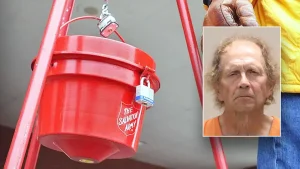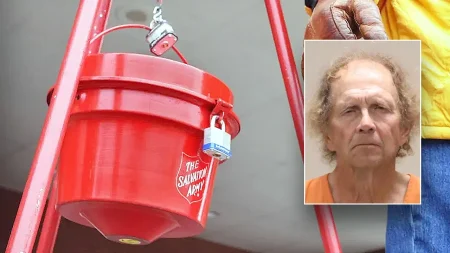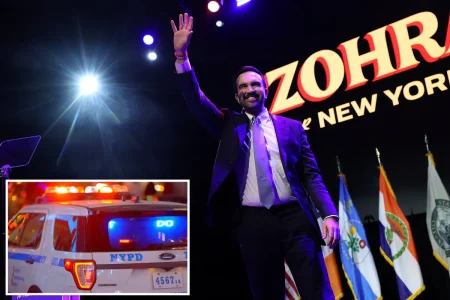A Doctor’s Last Words: How Dr. Omar Selik’s Final Testimony Exposed the True Cost of Conflict
The Voice from the Rubble: How One Doctor’s Desperate Plea Transcended the Battlelines
In a world increasingly numbed by constant reports of distant suffering, it was the raw, unfiltered testimony of one doctor that momentarily pierced the collective consciousness. Dr. Omar Selik, speaking from a makeshift medical facility in a city under relentless bombardment, delivered what would become his final message to the outside world. His words—unvarnished, urgent, and deeply human—cut through the sanitized language of military communiqués and political posturing that typically dominate conflict reporting. “We are no longer counting the dead,” he told a journalist over a faltering satellite connection. “We are trying to save who we can with what little we have left.” Within hours of this transmission, the hospital where Selik worked was reduced to rubble in an airstrike that officials would later describe as a “regrettable error.” In the cacophony of accusations that followed, one tragic fact remained undisputed: the doctor whose testimony had momentarily humanized an abstract conflict was among the dead.
The circumstances that brought Dr. Selik to this fateful intersection of medicine and geopolitics began long before the current conflict. Colleagues describe a brilliant physician who could have built a comfortable practice anywhere in the world but instead chose to work where medical expertise was most desperately needed. “Omar believed that healthcare wasn’t a privilege but a fundamental human right,” explains Dr. Amira Fahim, who studied with Selik during their residency at a prestigious European medical center. “He was offered positions at top hospitals in three countries, but he always said his skills were needed most where resources were scarce.” This philosophy led him back to his homeland after completing his training, where he established a reputation as both an exceptional surgeon and a tireless advocate for improving rural healthcare infrastructure. When the conflict erupted, Selik was among the first physicians to volunteer for duty in the hardest-hit areas, understanding that his expertise in trauma surgery would be invaluable as civilian casualties mounted.
Behind the Headlines: The Man Who Chose Compassion Over Safety
The personal cost of this professional commitment was substantial. Communications recovered from Dr. Selik’s damaged phone reveal a man increasingly haunted by what he witnessed yet determined to remain present. “I could leave—I have the passport, the connections,” he wrote to a former colleague two weeks before his death. “But who will stay for them? Who will bear witness? Who will tell their stories?” This sense of moral obligation kept him working through increasingly dangerous conditions as the hospital lost power, medicine, and eventually even basic supplies like clean bandages. In his final days, Selik was performing complex surgeries by flashlight, using vodka as a sterilizing agent when medical alcohol ran out, and training local teachers and veterinarians to serve as emergency medical assistants. His innovation in these desperate circumstances—including devising a manual suction system from plastic bottles when electric suction machines failed—saved dozens of lives and has since been documented by international medical journals as a model for crisis medicine.
What makes Selik’s story particularly significant is how his testimony transformed public understanding of the conflict. Before his viral interview, media coverage had largely focused on strategic objectives, territorial gains, and political implications. The human cost remained abstract—casualty figures cited without context, suffering referenced but rarely depicted. Selik’s testimony changed that equation. Speaking with the moral authority of a physician sworn to heal, he described children arriving at his operating table with injuries no medical textbook had prepared him for, families sheltering in hospital corridors because their homes no longer existed, and colleagues working 72-hour shifts fueled only by determination and increasingly diluted coffee. “This isn’t a ‘military operation’ or a ‘strategic initiative,'” he said in what would become his most widely quoted statement. “This is the systematic destruction of a community. I am watching a society being unmade, one bombing run at a time.”
When Truth Becomes a Casualty: The International Response to a Doctor’s Final Testimony
The global response to Selik’s testimony was immediate and polarizing. Human rights organizations cited his account as evidence of potential war crimes, while military spokespeople questioned the reliability of information coming from an active conflict zone. Media analysts noted how different outlets covered his testimony along predictably partisan lines—some elevating him as a heroic truth-teller, others suggesting he was unwittingly serving as a propaganda tool. What none disputed was the authenticity of his voice. Even those questioning his conclusions acknowledged that Selik spoke with the unvarnished credibility of direct experience. This quality made his sudden silence all the more profound when news broke that the hospital had been destroyed in what military officials described as an “intelligence failure” that misidentified the medical facility as a command center.
The aftermath of Selik’s death has seen his words acquire even greater resonance. Medical students across multiple countries have organized vigils and established scholarships in his name. His final interview has been transcribed, translated into 27 languages, and incorporated into university curricula on medical ethics, humanitarian law, and conflict studies. Perhaps most significantly, diplomatic sources indicate that private conversations between high-level officials referenced his testimony as having “complicated” certain military decisions and accelerated humanitarian access negotiations. “What Dr. Selik provided was not just information but moral clarity,” notes Professor Elena Vasquez, an expert in international humanitarian law. “When he described holding a child with survivable injuries who died simply because basic antibiotics weren’t available due to the blockade, he made abstract policy discussions concrete in a way that changed the calculus for decision-makers.”
Legacy in the Ruins: How One Doctor’s Sacrifice Continues to Reshape Humanitarian Response
Six months after his death, Dr. Selik’s legacy continues to evolve in unexpected ways. The techniques he developed for providing trauma care with minimal resources have been formalized into a training program now being implemented by three major humanitarian organizations. His emphasis on documenting civilian casualties—which he insisted was a medical responsibility as important as treatment—has influenced protocols for humanitarian response in active conflicts. Perhaps most poignantly, several of the local residents he trained as emergency medical providers in his final weeks have established a community clinic operating out of a former school building, continuing his work despite ongoing shortages and periodic violence. “Dr. Omar taught us that medicine isn’t just about knowledge or equipment,” explains Fatima Rahal, a former mathematics teacher now working as a medical assistant. “It’s about presence. About staying when others leave. About seeing the humanity in each person who comes through the door.”
As another cycle of negotiations falters and attention shifts to newer crises elsewhere, humanitarian workers worry that the clarity Selik brought to this conflict is again being obscured by political calculations and strategic abstractions. Yet in hospital break rooms, diplomatic backchannels, and community gathering spaces, his words continue to circulate—a persistent reminder that behind every statistic in every conflict stands a human being with dreams, relationships, and inherent dignity. In this way, Dr. Omar Selik achieved something rare in modern warfare: he restored individuality to victims typically reduced to numbers, gave agency to communities typically portrayed only as passive recipients of violence, and reminded the world that even in the darkest circumstances, acts of moral courage remain possible. His voice—silenced too soon—somehow continues to speak.








